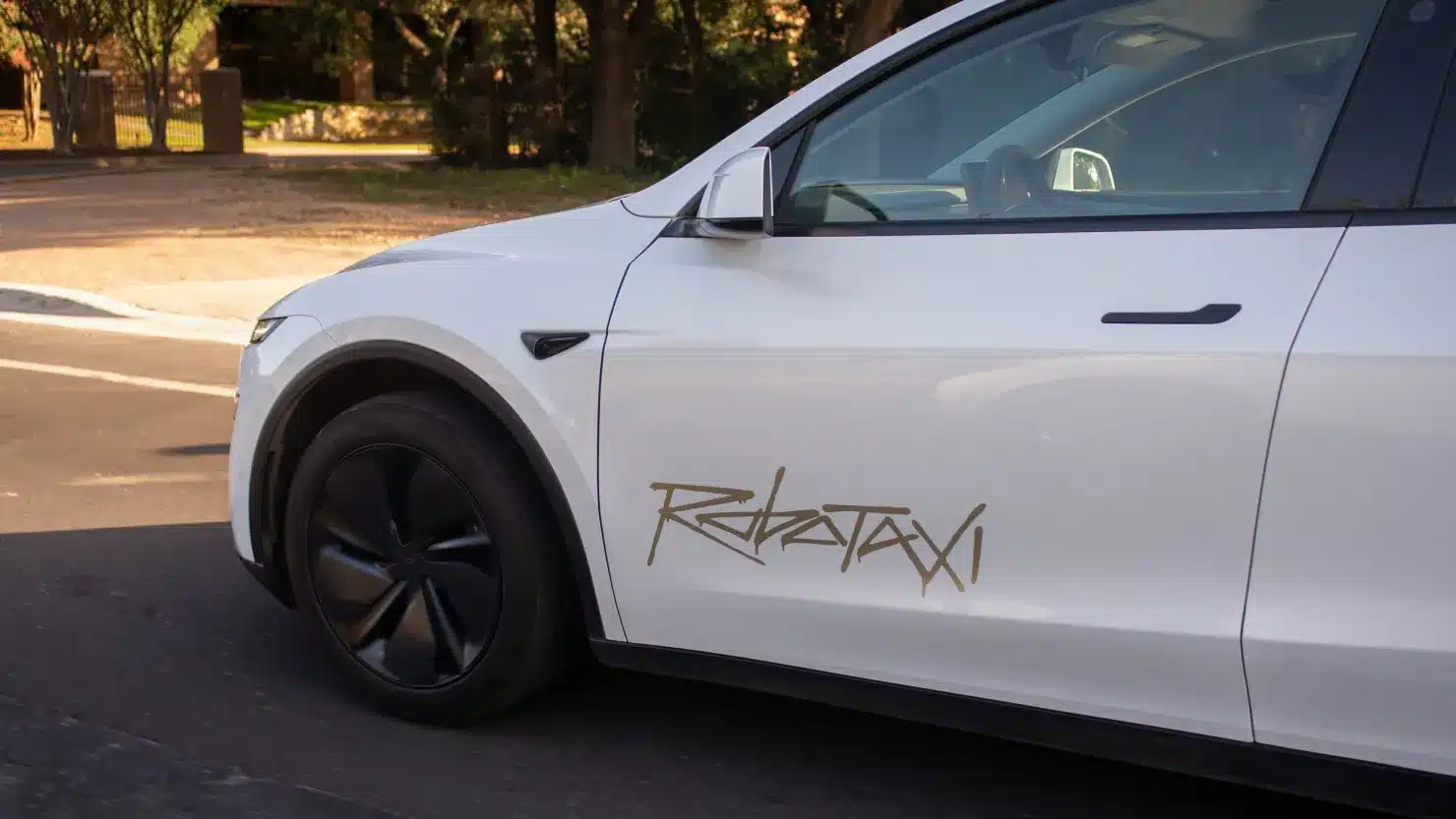
Tesla stock just jumped nearly 10% after the long-promised robotaxi fleet quietly hit the streets of Austin, Texas.
It wasn’t a flashy nationwide rollout. No big press event. Just a few Model Y vehicles, a $4.20 flat fare, and a very Elon Musk kind of “launch” post on X. Still, that was enough to light up the market.
So, what actually happened, and why did Wall Street get so excited?
The Launch Everyone Was Waiting For

Tesla’s robotaxi program has been teased for years. Musk has repeatedly told investors it was coming, sometimes “next year,” sometimes “within months.” On Sunday, it finally happened. A small group of invited users, mostly Tesla superfans and influencers, got to test fully autonomous rides in Austin. Early riders reported smooth trips, even claiming they did 10+ rides without a hitch.
Of course, there were a few hiccups. One car reportedly drove the wrong way briefly, and another slammed the brakes unexpectedly near parked police cars. But for Tesla, just getting these cars on the road was a win, especially since Alphabet’s Waymo and China’s Apollo Go are already miles ahead in terms of scale and safety perception.
Why the Stock Popped
Here’s the thing: this wasn’t just about cars. It was about confidence. Investors have been waiting for Tesla to prove it can actually compete in the autonomous driving race. Sunday’s launch didn’t prove Tesla is the market leader, but it showed they’re still in the race.
That was enough for traders to pile in. The result? TSLA surged nearly 10%, adding billions to the company’s market cap in just one session.
It also came at a time when Tesla needed a win. The stock had been dragging most of 2025, down amid weak EV demand, rising competition, and general skepticism around its autonomy promises. The Tesla Robotaxi Austin Launch was a much-needed narrative shift.
The $4.20 Ride, and the Marketing Strategy
Only Elon Musk would launch a robotaxi service and price the ride at exactly $4.20, a nod to both meme culture and Tesla’s earlier SEC drama. It’s classic Musk: mixing product, PR, and trolling into one.
But don’t miss the strategy behind the chaos. By inviting superfans who monetize Tesla content online, the company essentially crowdsourced its early PR rollout. Instead of press releases, it got real-time social media buzz. For now, it worked.
But What About Safety and Scale?
Here’s the catch: this isn’t a full rollout. These robotaxis are limited to small test zones. The technology being used, Tesla’s FSD Unsupervised, isn’t available to general customers. And lawmakers in Texas have already raised safety concerns, asking Tesla to slow down.
Tesla has had its fair share of Autopilot and FSD Supervised controversies, with federal regulators investigating several fatal crashes involving those features. So, this isn’t just a tech challenge, it’s a regulatory and trust problem, too.
The Bigger Picture
Right now, Waymo is running 250,000+ rides a week, while Tesla is just getting started. In China, Baidu’s Apollo Go has clocked over 11 million autonomous rides. Tesla has ambition, but it’s still behind in terms of actual results.
Still, Musk claims he’s aiming for “hundreds of thousands” of robotaxis in the U.S. by the end of next year. That’s a bold target, especially when many analysts believe full autonomy is still years away from widespread adoption.
What This Means for Tesla Stock
Here’s the honest take:
- Short-term: This launch gave investors something new to be excited about. Expect volatility, but there’s momentum again.
- Mid-term: If Tesla can iron out the tech and expand to cities like LA or SF, you’ll likely see more upward pressure on the stock.
- Long-term: Everything hinges on safety, scale, and actual rider uptake. Tesla’s robotaxi dream won’t mean much if regulators or real-world data slow it down.
Bottom Line:
The Tesla Robotaxi Austin Launch may have been small, but it hit big with investors. It reminded the market what Tesla’s been selling all along, disruption. Whether it becomes a game-changer or another overhyped Musk moment depends on what happens next.
But for now? Wall Street is back on board.



















































































































































































































































































































































































































































































































































































































































































































































































































































































































































































































































































































































































